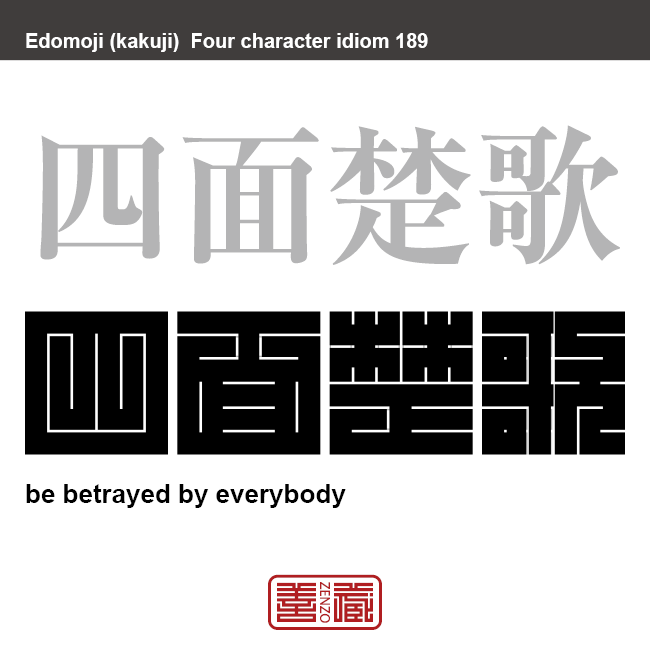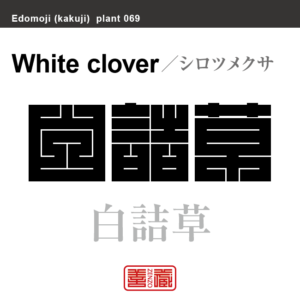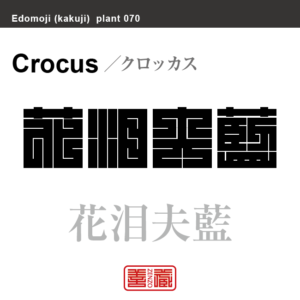四面楚歌 しめんそか 角字でことわざ、四字熟語

四面楚歌
しめんそか
Shimen-Soka
be betrayed by everybody
Unicode: [四_0x56DB][面_0x9762][楚_0x695A][歌_0x6B4C]
周囲をすべて敵や反対者に囲まれ、完全に孤立して、助けや味方がこないこと、そのさま。孤立無援と同じ意味。
中国の秦~前漢の時代、紀元前202年の出来事が元となってできた故事成語。
劉邦と争っていた項羽の軍隊が垓下(現在の安徽省宿州市)に砦を築く(垓下の戦い)。兵士の数は減り食糧も乏しく、敵兵に砦を幾重にも包囲され、夜になると劉邦軍の兵士が項羽の故郷、楚その歌を歌う声が聞こえる。項羽はこれを聞いて驚き「楚の人間はみな敵に寝返ってしまったのか」と嘆く。
角字とは?
江戸時代に誕生した角字は、正方形のグリッド内にほぼ水平・垂直のラインのみで文字(漢字)が表現されるグラフィックアートです。
正方形という限られた空間の中に、あらゆる文字を閉じ込めようとするグラフィックデザインは、前述した、ミニマムな物に対する日本人特有のこだわりが随所に感じられます。
そのシンプルで有りながら、奥深い「角字」は多くの日本人を魅了し、お祭りで着る半被や印半纏(しるしばんてん)と言われる着物や、商標、印鑑、家紋、看板デザインなどに今日まで数多く使用されてきました。
What is Kakuji?
There is a style of penmanship called “Kakuji” in Japan. Edo-born Kakuji is a graphicart that expresses letters (kanji) with almost horizontal and vertical lines only.
The design which bases on many straight lines seems simple, or too plain even at its first glance; yet this beautiful artistic penmanship that encompasses the aesthetic of the Japanese in the Edo era, also known as “Iki”, and playfulness has long been inherited to this day, thanks to the masteries’ long years of efforts in training and refinement.
Kakuji with its simplicity and depth is used for designs such as trademark, hanko stamp, family crest and signboard.































































 2文字コード:MZ 3文字コード:MOZ 数字:508 ITU:258 ccTLD:.mz
2文字コード:MZ 3文字コード:MOZ 数字:508 ITU:258 ccTLD:.mz







































































































































